Our side trip on the way to Lyon was rather a surprise. We had no idea what to expect from “The Palais Ideal” classified as a monument historique; certainly not what we found. The place was built by a postman in his spare time from found rocks and stones and quite a deal of cement. It is perhaps a bit like a smaller scale of Gaudi but without the mathematical formulations behind that architecture. Consider it naive art and the expression of one man’s philosophy and mental images, as he inscribes quotes and thoughts in various places, names some of his figures to represent great men and embraces different cultures and religions. The whole is like a gigantic and fantastic sandcastle 12 metres high and 26 metres long.
Apart from being visited as an attraction, the palace now acts as a backdrop for music festivals, especially the more avant gard and noisy it appears, at least from the posters. Probably one of our stranger visits.
Coming into Lyon was a long traffic jam along the river where the Saone and Rhone join. And right htere, at the confluence, they are building the Confluence Museum. I thought it must be a Frank Gehry titanium place again, but no! it is by the Austrian firm Coop Himmelbau and is in stainless steel and glass, representing a floating crystal. Here it is with the basilica high on a hill in the background.
Lyon was one of those places where we said “Must see, but not much time” remembering we have committed the cardinal sin of visiting too many places in too short a time. So we booked a cheap Ibis Styles which had parking, and a walk with a Lyon Greeter to get the most out of the town in two nights. We loved it, especially our walk with Jean Claude who showed us all the hidden little bits of Lyon.
The hotel was nothing flash, as expected, but clean and predictable. The Mercure next door had a good restaurant, remembering that hotels in France may actually have very decent or better restaurants. This was very decent. Because we were a bit out from the centre, we ate there both nights.
Now some of you may not know about the world wide city greeters program. Basically some places have volunteers who live locally and who delight in showing you their city. The service is free and you are not allowed to tip or pay the greeter, though you can and should make a donation to the program in the city you visit. You state your interests and they attempt to match you with a greeter who can show you around. So it was that we were put in contact with Jean Claude, first by email and then in person.
We met in a central square and quickly dived into the traboules, the passages that link, internally, parts of buildings that grew together over time in the Renaissance era. So the interiors are often lovely and reflect the proportions and styles of the time, with beautiful curved staircases, old wells, Renaissance windows and joining elevated passageways. The lower areas are public thoroughfares so anyone can enter, (if you know what lies behind the closed doors) which must drive the residents mad. These places have, of course, progressed from grand mansions that grew in size back from the street, to eventually become very large mansions connected by ground and higher level corridors, to gradually disintegrate into seedy housing and then to experience a renaissance, to become (or be in the process of becoming) desirable apartments. It is kind of odd to see modern post boxes inside or even an elevator.
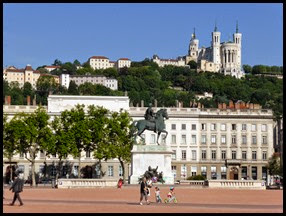 Huge square for marshalling the troops, with basilica in the background Huge square for marshalling the troops, with basilica in the background | 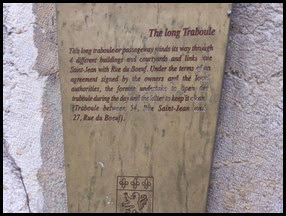 Traboule information Traboule information |
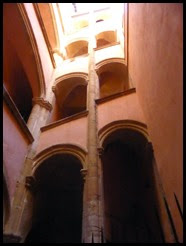 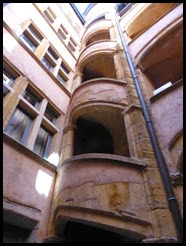 Stairs and connecting runways | 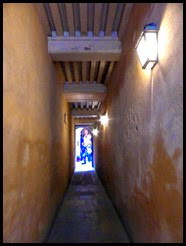 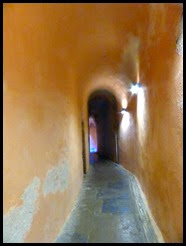 Ground level passageways |
After this we walked back over one of the many (26) bridges of Lyon, through the Saturday markets along the river (we bought raspberries to share) and took the funicular up the hill to the Basilica of Notre-Dame de Fourvière, built about the same time as Sacre Coeur in Paris for deliverance from the Franco Prussian war. The style is said to be neo-Byzantine but there seem to be many foretastes of Art Nouveau in the outside carvings and the interior mosaics. A most interesting building, but a major service was in progress, so just a quick peek inside which is mainly in blue and gold mosaics and rather lovely from what I could see.. The view over the city from the hilltop was marvellous, though strangely, it was the chimneys of all the houses and apartment blocks that struck me first.
Up in the Croix Rousse area were the houses of former weavers. Lyon was famed for its cloth, especially silk. The lower floors of the house were strangely tall to accommodate the height of the looms. The weavers lived and worked in these houses which these days are quite grand and desirable residences. Lovely views and another good market. Also a sight of the most famed Trompe l’Oeil wall in the town which is quite extraordinary and well worth a visit.
We farewelled Jean Claude with a good beer before having lunch to fortify ourselves for the afternoon.
First the Museum of Fine Arts,with some very beautiful works. This is truly a major museum with paintings from Monet, Degas and Gauguin and a lovely Rodin sculpture of a young man that we were to meet several more times in Paris. I sort of don’t get the multiple castings and multiple sizes of Rodin’s work. Maybe some more discussion of that in Paris. The museum was a delight.
|
|
Jean Claude advised visiting Lyon Les Halles, Paul Bocuse. He is the three star chef of the town and this market place is a jewel, full of the finest food shops and ingredients, from truffles to pork to chocolate, cheese, wine and pastries. and cafes and restaurants to taste them all. It was closing for Saturday evening and Sunday so no dinner amongst this magnificence, though I did treat myself to a one person cake from Seve, whose creations are a symphony of fruit and ganache and creams and icings and chocolate and glazes and even gold leaf. I truly have never seen anything so magnificent in a cake display. Good luck the this enterprising young pastry chef. As for the rest of the market, well here you are…a sampling in the right order to make a good dinner (and my take home treat as well).
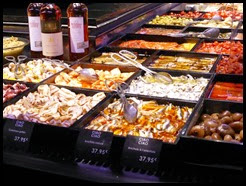 Antipasto Antipasto | 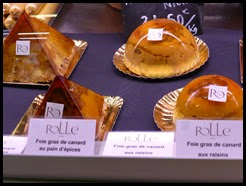 Foie Gras Foie Gras |  Veal, ready prepared for cooking Veal, ready prepared for cooking |
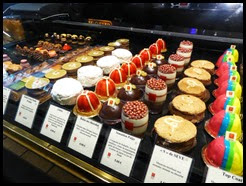 Dessert cakes Dessert cakes | 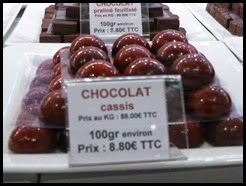 Chocolates Chocolates | |
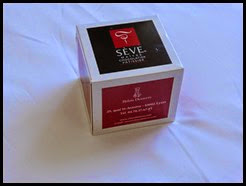 | 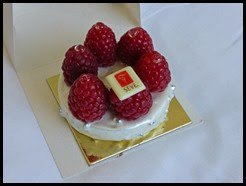 | 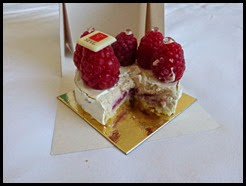 |
And a selection of celebration cakes. That one in the foreground left has real gold on it.
Next visit: Return to Dijon.
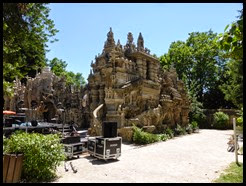
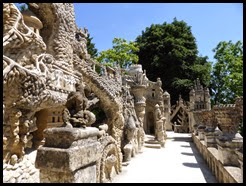
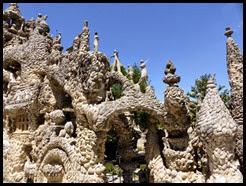
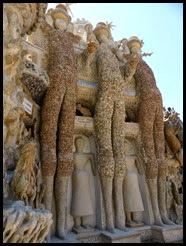


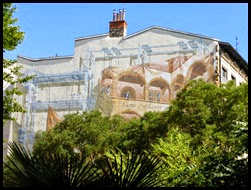
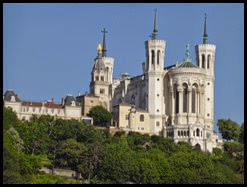

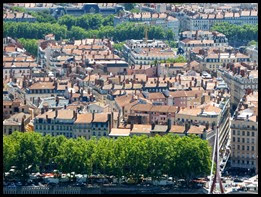
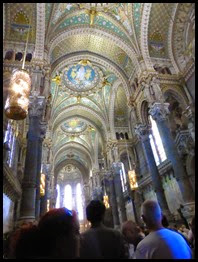
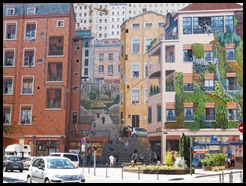
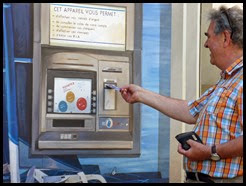
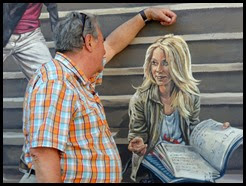
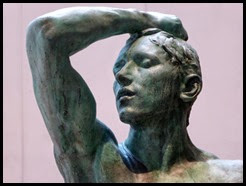
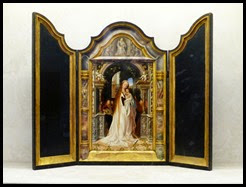
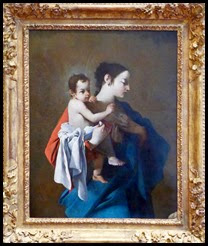
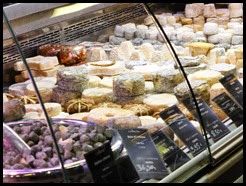
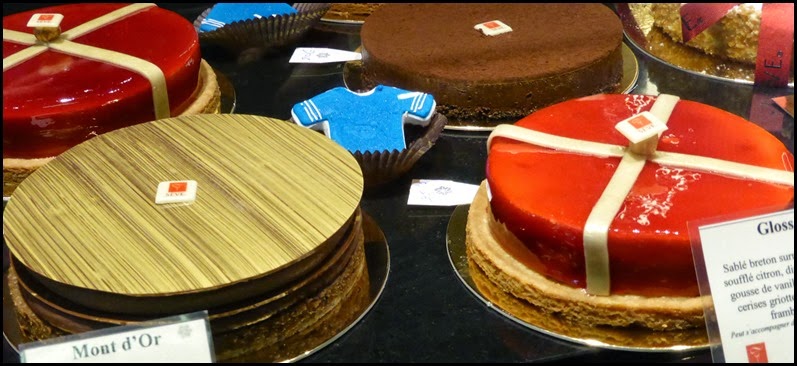
No comments:
Post a Comment